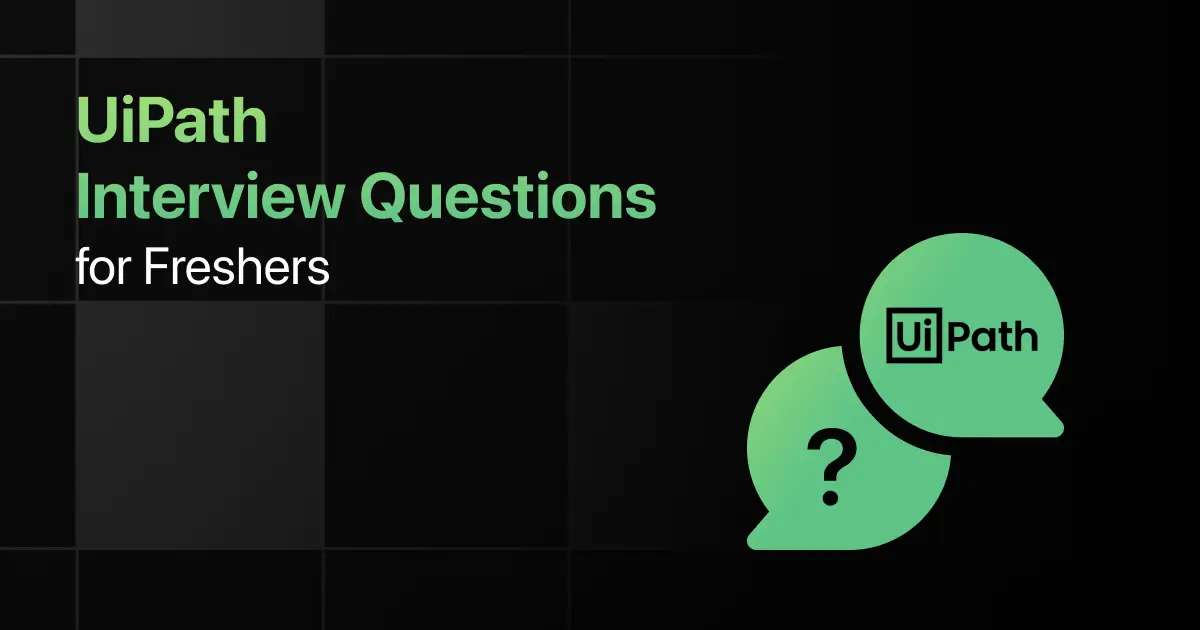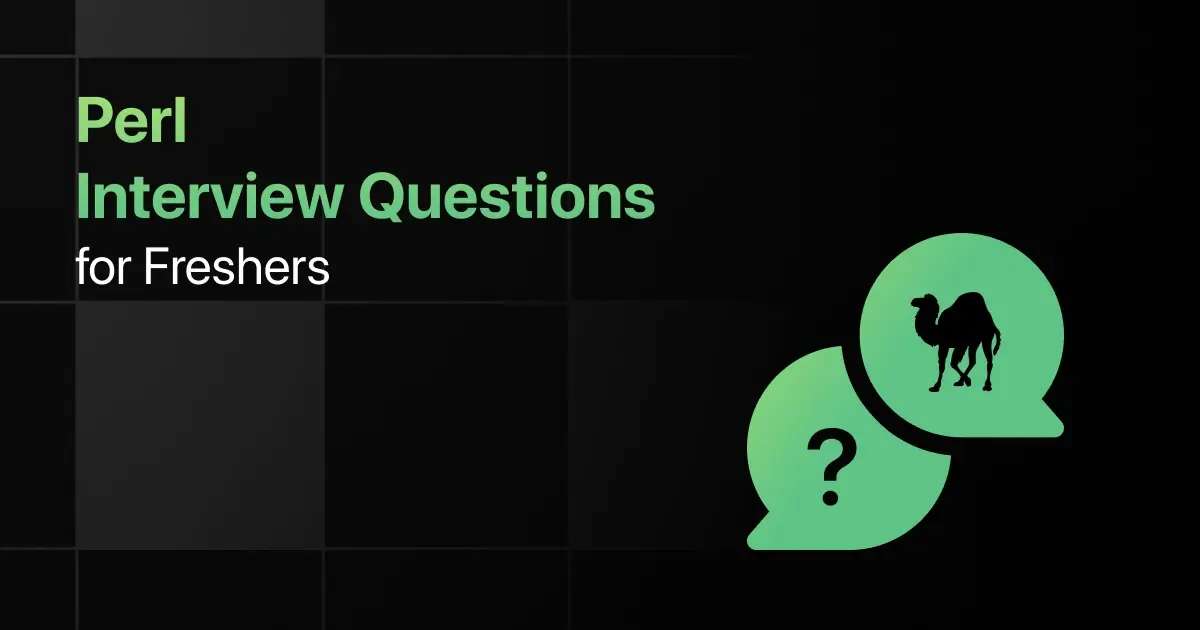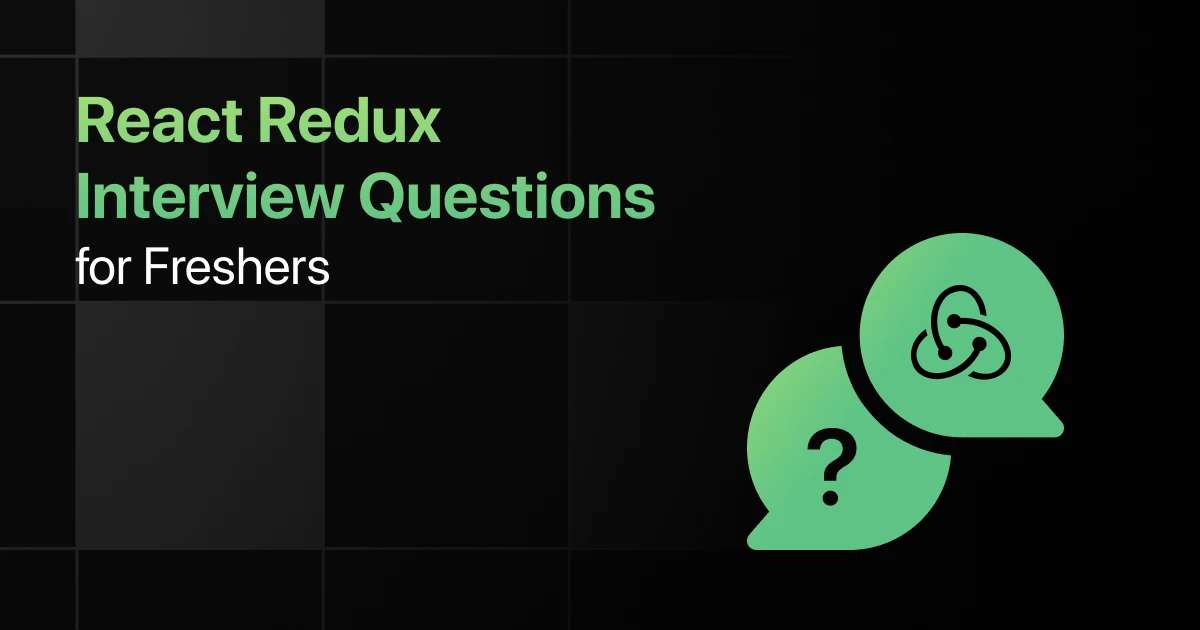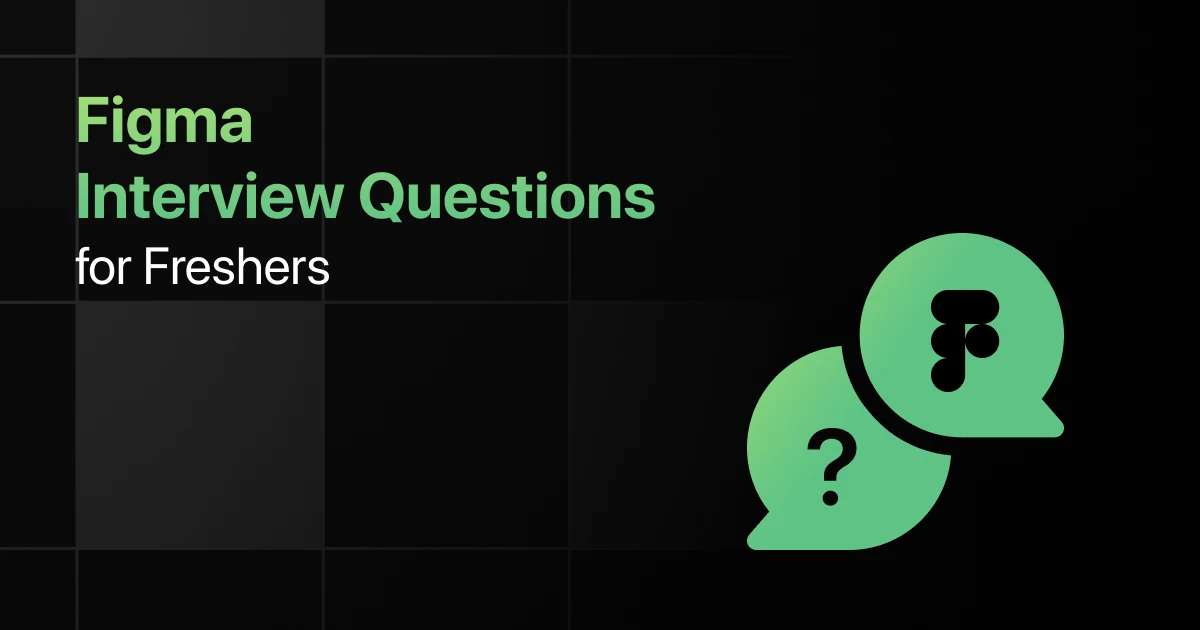Top UiPath Interview Questions for Freshers

Are you preparing for your first UiPath interview and wondering what questions you might face?
Understanding the key UiPath interview questions for freshers can give you more clarity.
With this guide, you’ll be well-prepared to tackle these UiPath interview questions and answers for freshers and make a strong impression in your interview.
Practice UiPath Interview Questions and Answers
Below are the top 50 UiPath interview questions for freshers with answers:
1. What is UiPath?
Answer:
UiPath is a leading Robotic Process Automation (RPA) tool that enables automation of repetitive tasks. It allows users to create software robots that can mimic human actions to perform business processes efficiently.
2. What are the different components of UiPath?
Answer:
The key components of UiPath include UiPath Studio, UiPath Orchestrator, and UiPath Robot. Studio is used for designing workflows, Orchestrator for managing and deploying them, and Robot executes the workflows.
3. Explain the difference between attended and unattended robots in UiPath.
Answer:
Attended robots require human intervention to operate and are typically used for desktop automation, while unattended robots operate independently without user input, often running on a server.
4. What is a workflow in UiPath?
Answer:
A workflow in UiPath is a visual representation of the process automation that defines the sequence of tasks to be performed. It consists of activities arranged in a specific order.
5. What types of workflows can be created in UiPath?
Answer:
UiPath allows the creation of three types of workflows: Sequence, Flowchart, and State Machine. Each type serves different automation scenarios based on complexity and control flow.
6. How does UiPath handle exceptions?
Answer:
UiPath uses Try-Catch activities to handle exceptions, allowing developers to define actions in case of errors, ensuring the workflow continues smoothly or logs errors for review.
7. What is the purpose of UiPath Orchestrator?
Answer:
UiPath Orchestrator is a web-based application that allows users to manage, schedule, and monitor their robots and workflows, providing centralized control over automation processes.
8. What are activities in UiPath?
Answer:
Activities are the building blocks of a UiPath workflow that define specific actions, such as data manipulation, file handling, or UI automation. They are pre-defined tasks that can be dragged into the workflow.
9. What is the difference between a variable and an argument in UiPath?
Answer:
A variable holds data within a workflow and is used for internal operations, while an argument is used to pass data between workflows, allowing for input and output parameters.
10. What is data scraping in UiPath?
Answer:
Data scraping is a technique used in UiPath to extract structured data from websites or applications. It enables automation of data extraction for reporting and analysis.
11. How can you read data from Excel in UiPath?
Answer:
Data can be read from Excel using the “Read Range” activity, which allows users to specify the sheet and range to extract data into a DataTable.
12. What is a DataTable in UiPath?
Answer:
A DataTable is an in-memory representation of tabular data that consists of rows and columns, often used to manage and manipulate data extracted from databases or Excel files.
13. What is the role of selectors in UiPath?
Answer:
Selectors are XML-based strings that identify UI elements in applications. They are crucial for UiPath to interact with UI components during automation.
14. What is a Library in UiPath?
Answer:
A Library in UiPath is a reusable component or set of activities packaged together, allowing developers to share and use workflows or functionalities across multiple projects.
15. How can you automate web applications in UiPath?
Answer:
Web applications can be automated using activities such as “Click,” “Type Into,” and “Get Text,” combined with accurate selectors to identify UI elements.
16. What are the different types of triggers in UiPath Orchestrator?
Answer:
Triggers in UiPath Orchestrator can be time-based (scheduled) or event-based (such as when a new file is added to a folder) to start automation processes automatically.
17. What is the difference between the ‘Click’ and ‘Click Image’ activities?
Answer:
The ‘Click’ activity simulates a click on a UI element using selectors, while the ‘Click Image’ activity clicks on a specific image on the screen, useful when the UI is dynamic or not reliably accessible.
18. What is the purpose of the UiPath Assistant?
Answer:
The UiPath Assistant is a desktop application that allows users to interact with their robots easily, run processes, and view logs, providing a user-friendly interface for managing automation.
19. How can you handle dynamic selectors in UiPath?
Answer:
Dynamic selectors can be handled by using wildcards or variables within the selector string, allowing for more flexible identification of UI elements that change during runtime.
20. What is the use of ‘Invoke Workflow’ activity in UiPath?
Answer:
The ‘Invoke Workflow’ activity allows developers to call another workflow from the current one, enabling modular design and code reuse within UiPath projects.
21. What is a Queue in UiPath?
Answer:
A Queue in UiPath is a data structure used to store items for processing in an unattended robot, allowing for load balancing and parallel processing of tasks.
22. What is UiPath Assistant’s role in the RPA lifecycle?
Answer:
UiPath Assistant serves as an interface for users to trigger and manage attended automations, playing a crucial role in executing processes that require human intervention.
23. How can you debug a workflow in UiPath?
Answer:
Debugging in UiPath can be performed using breakpoints, step-into, and log messages, enabling developers to identify and fix issues in their workflows during the development process.
24. What are the common data types used in UiPath?
Answer:
Common data types in UiPath include String, Int32, Boolean, DataTable, and Array, allowing for a variety of data manipulations and operations within workflows.
25. What is a State Machine in UiPath?
Answer:
A State Machine in UiPath is a workflow structure that allows for multiple states and transitions based on defined conditions, ideal for complex scenarios with varied process flows.
26. How do you manage robot licenses in UiPath?
Answer:
Robot licenses in UiPath are managed through Orchestrator, where administrators can assign and revoke licenses based on usage requirements and business needs.
27. What is the difference between RPA and traditional automation?
Answer:
RPA focuses on automating business processes using software robots with minimal coding, while traditional automation often involves programming and is limited to specific tasks or environments.
28. What are ‘Transactions’ in UiPath?
Answer:
Transactions in UiPath refer to individual units of work processed by a robot, often used in conjunction with Queues to manage and track the status of automated tasks.
29. What is the significance of the ‘Assign’ activity?
Answer:
The ‘Assign’ activity is used to assign values to variables, enabling data manipulation and storage within workflows, essential for process execution.
30. How do you secure sensitive data in UiPath?
Answer:
Sensitive data in UiPath can be secured using Asset management in Orchestrator, encrypting sensitive information, and ensuring access controls are in place for workflows.
31. What is a Transaction Item in UiPath?
Answer:
A Transaction Item is a specific instance of data within a Queue, representing a single task or record that a robot processes during execution.
32. How can you optimize workflow performance in UiPath?
Answer:
Workflow performance can be optimized by minimizing unnecessary activities, reusing workflows, using efficient selectors, and properly managing exceptions.
33. What is the purpose of the ‘Write Line’ activity?
Answer:
The ‘Write Line’ activity is used for logging messages to the output panel during workflow execution, useful for debugging and tracking process flow.
34. How can you schedule a process in UiPath?
Answer:
Processes can be scheduled in UiPath Orchestrator by creating a trigger that defines when the process should start based on time or events.
35. What is the role of UiPath Go?
Answer:
UiPath Go is a marketplace for sharing and downloading reusable components, libraries, and custom activities created by the UiPath community, enhancing collaboration.
36. How do you create a custom activity in UiPath?
Answer:
Custom activities in UiPath can be created using Visual Studio, where developers build and compile the activity, making it available for use in workflows.
37. What is the purpose of the ‘Retry Scope’ activity?
Answer:
The ‘Retry Scope’ activity is used to retry a sequence of actions until a condition is met or a maximum number of retries is reached, ensuring resilience in workflows.
38. What is the difference between synchronous and asynchronous activities in UiPath?
Answer:
Synchronous activities are executed in sequence, waiting for one to complete before moving to the next, while asynchronous activities can run independently, allowing for parallel execution.
39. How do you perform screen scraping in UiPath?
Answer:
Screen scraping in UiPath can be performed using the ‘Screen Scraping’ wizard, which captures data from a screen and converts it into a usable format.
40. What is the importance of logging in UiPath?
Answer:
Logging in UiPath is crucial for tracking workflow execution, identifying errors, and maintaining an audit trail, which aids in debugging and compliance.
41. How can you use variables and arguments to enhance a workflow in UiPath?
Answer:
Variables and arguments can be used to pass data between activities, manage state, and customize workflows, enabling dynamic and flexible process automation.
42. What are the key differences between UiPath and other RPA tools?
Answer:
Key differences may include user interface design, ease of use, community support, scalability, and integration capabilities with various applications.
43. What is a ReFramework in UiPath?
Answer:
The ReFramework (Robotic Enterprise Framework) is a template provided by UiPath for building robust, scalable, and maintainable automation solutions, focusing on exception handling and transaction management.
44. How do you ensure high availability of UiPath robots?
Answer:
High availability can be ensured by using a load balancer, distributing workloads across multiple robots, and implementing failover mechanisms in Orchestrator.
45. What are the best practices for designing a UiPath workflow?
Answer:
Best practices include maintaining modular design, using meaningful names for activities and variables, implementing error handling, and documenting the workflow process clearly.
46. How can you extract data from PDFs in UiPath?
Answer:
Data can be extracted from PDFs using the ‘Read PDF Text’ or ‘Read PDF with OCR’ activities, allowing for data manipulation and automation of document processing.
47. What is a background process in UiPath?
Answer:
A background process in UiPath refers to a process that runs without a user interface, typically handled by unattended robots for automated tasks.
48. How do you handle file manipulation in UiPath?
Answer:
File manipulation in UiPath can be handled using activities like ‘Move File,’ ‘Copy File,’ and ‘Delete File’ to manage file systems effectively during automation.
49. What is the significance of the ‘Delay’ activity?
Answer:
The ‘Delay’ activity is used to pause the execution of a workflow for a specified duration, allowing for synchronization with external processes or systems.
50. How do you integrate UiPath with other applications?
Answer:
UiPath can be integrated with other applications using APIs, web services, and custom connectors, allowing for seamless automation across different platforms.
Final Words
Getting ready for an interview can feel overwhelming, but going through these UiPath fresher interview questions can help you feel more confident.
With the right preparation, you’ll ace your UiPath interview but don’t forget to practice automation workflows, activities, and orchestrator-related interview questions too.
Frequently Asked Questions
1. What are the most common interview questions for UiPath?
Common UiPath interview questions are :
- automation workflows
- selectors
- orchestrators
2. What are the important UiPath topics freshers should focus on for interviews?
Freshers should focus on topics like variables, control flow, data scraping, and UI automation.
3. How should freshers prepare for UiPath technical interviews?
Freshers should prepare by building automation workflows, practicing with UiPath Studio, and learning about bots and RPA concepts.
4. What strategies can freshers use to solve UiPath coding questions during interviews?
Freshers can use strategies like breaking tasks into smaller workflows and focusing on optimizing selectors and exceptions.
5. Should freshers prepare for advanced UiPath topics in interviews?
Yes, freshers should prepare for advanced UiPath topics like REFramework if the role requires knowledge of complex automation solutions.
Explore More Interview Questions
- Python
- Java
- SQL
- React
- JavaScript
- C Programming
- HTML
- CSS
- Angular
- C++
- Spring Boot
- Node JS
- Excel
- C#
- DBMS
- PHP
- Linux
- Operating System
- MySQL
- Spring
- Flutter
- MongoDB
- Django
- React Native
- jQuery
- Bootstrap
- Embedded C
- DSA
- R Programming
- Hadoop
- .NET
- Power BI
- ASP.NET
- ASP.NET MVC
- Android
- Tableau
- MVC
- WordPress
- TypeScript
- Spark
- Kotlin
- Swift
- Golang
- Shell Scripting
- iOS
- Spring MVC
- Next JS
- AWS
- Kubernetes
- Docker
- Cyber Security
- Azure
- Terraform
- Vue JS
Related Posts


Top Perl Interview Questions for Freshers
Are you preparing for your first Perl interview and wondering what questions you might face? Understanding the key Perl interview questions …









